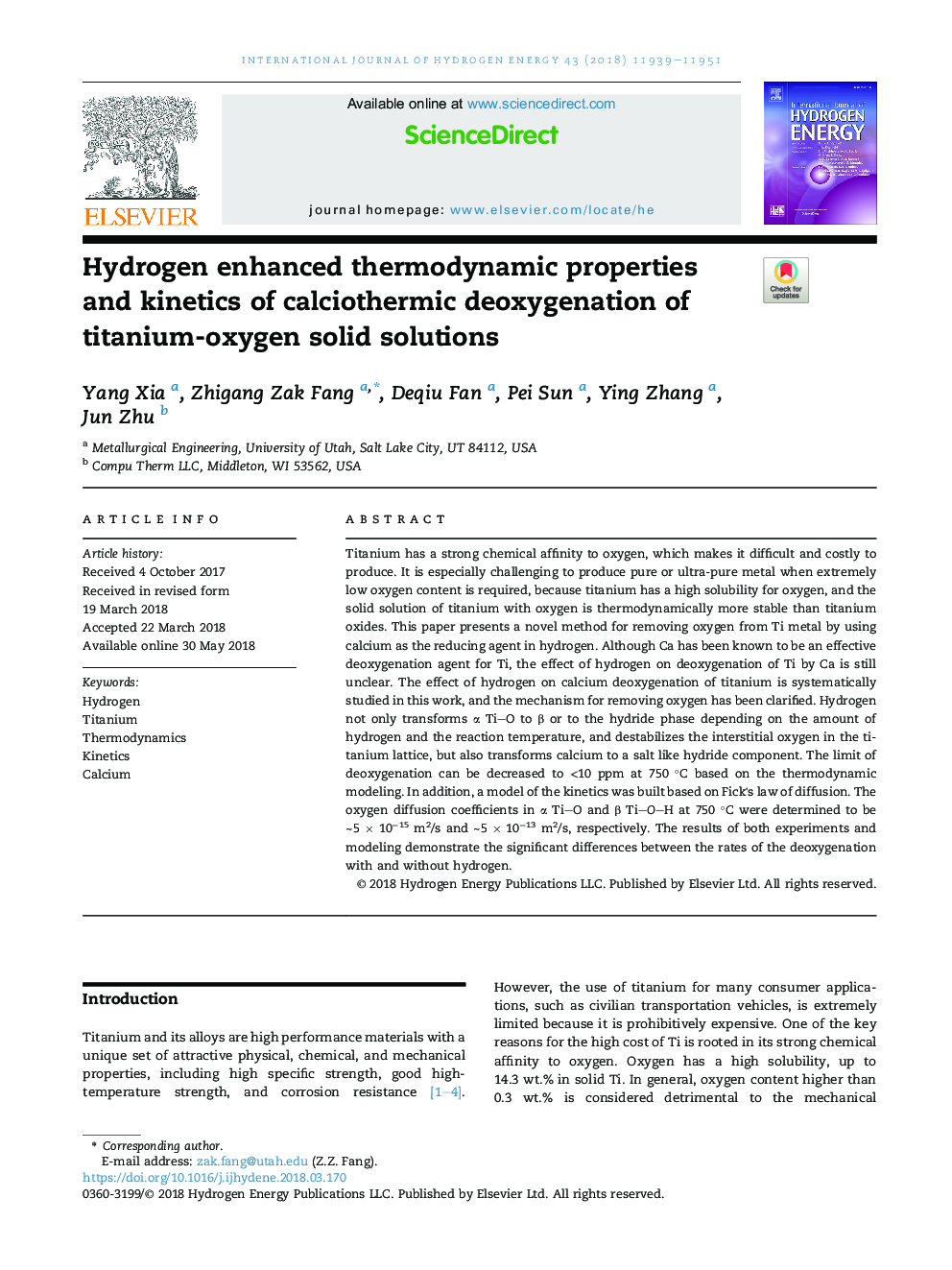| Article ID | Journal | Published Year | Pages | File Type |
|---|---|---|---|---|
| 7705499 | International Journal of Hydrogen Energy | 2018 | 13 Pages |
Abstract
Titanium has a strong chemical affinity to oxygen, which makes it difficult and costly to produce. It is especially challenging to produce pure or ultra-pure metal when extremely low oxygen content is required, because titanium has a high solubility for oxygen, and the solid solution of titanium with oxygen is thermodynamically more stable than titanium oxides. This paper presents a novel method for removing oxygen from Ti metal by using calcium as the reducing agent in hydrogen. Although Ca has been known to be an effective deoxygenation agent for Ti, the effect of hydrogen on deoxygenation of Ti by Ca is still unclear. The effect of hydrogen on calcium deoxygenation of titanium is systematically studied in this work, and the mechanism for removing oxygen has been clarified. Hydrogen not only transforms α TiO to β or to the hydride phase depending on the amount of hydrogen and the reaction temperature, and destabilizes the interstitial oxygen in the titanium lattice, but also transforms calcium to a salt like hydride component. The limit of deoxygenation can be decreased to <10 ppm at 750 °C based on the thermodynamic modeling. In addition, a model of the kinetics was built based on Fick's law of diffusion. The oxygen diffusion coefficients in α TiO and β TiOH at 750 °C were determined to be â¼5 Ã 10â15 m2/s and â¼5 Ã 10â13 m2/s, respectively. The results of both experiments and modeling demonstrate the significant differences between the rates of the deoxygenation with and without hydrogen.
Related Topics
Physical Sciences and Engineering
Chemistry
Electrochemistry
Authors
Yang Xia, Zhigang Zak Fang, Deqiu Fan, Pei Sun, Ying Zhang, Jun Zhu,
